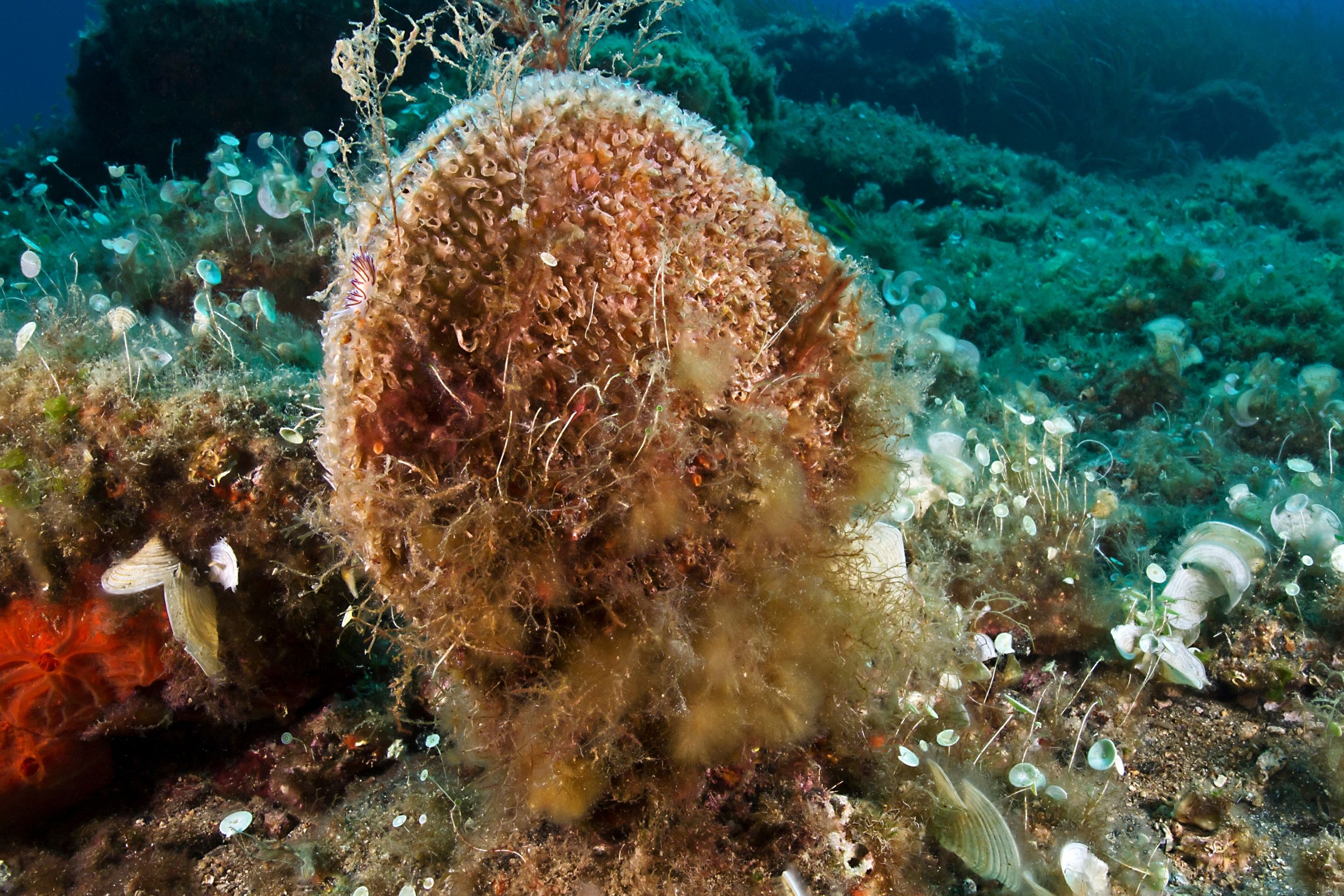Fan mussel
(Atrina fragilis)

Description
Atrina fragilis, the fan mussel, is a species of large saltwater clam, a marine bivalve mollusc in the family Pinnidae, the pen shells. The fan mussel, Atrina fragilis is one of the largest (30 to 48 cm long) and rarest bivalve molluscs occurring in northern European waters and the only member of the family Pinnidae to inhabit UK waters. It is one of the largest (30 to 48 cm long) European bivalve molluscs. It is one of the rarest species of marine mollusc in the United Kingdom so rare that surveys of nearly 9,000 sites around Britain between 1987 and 1998 found none. The fan mussel has a larval stage that is very difficult to identify due to the rarity of the specimen. Atrina fragilis is greatly affected by the industrialization of the fishing industry and it has impacted the distribution of the rare species. The shell of the fan mussel tapers to a point at the umbos, and is very brittle. It is yellowish to dark brown with blackish patches. The two valves are equal and triangular in outline, with prominent gapes. The shell surface has a sculpture of concentric lines and 8 to 12 ribs, which may have fluted spines. Shells can reach up to 48 cm in length, and the largest individuals may be 10 to 12 years old. Atrina fragilis also have been found in the Mediterranean Sea. Atrina fragilis has a large (30-48 cm in length by 15-24 cm wide), triangular, thin and fragile shell that tapers to a point. It has two valves that are equal with prominent gaps between the two shells and a hinge on the dorsal side. The most recent records of the rare bivalve Atrina fragilis are from Scotland in deep waters around the Shetland Isles and Orkney, and the west coast of Scotland, with scattered records from north-east Scotland, the south coast of England, the Channel Isles, Pembrokeshire in south Wales and Northern Ireland. They have also been recorded from north Scotland down to Mauritania, including the Iberian Peninsula, and into the Mediterranean. Atrina fragilis lives embedded in sublittoral fringe (approximately 400 m), subtidal muds, sandy muds or gravels. The fan mussel, like many other mussels, attaches to small stones by the secretion of strong byssal threads through their byssus gland to avoid being swept away in the ocean. Though embedded, between one and two thirds of the shell is buried, therefore leaving the fan mussel vulnerable to fishing trawlers.
Taxonomic tree:







